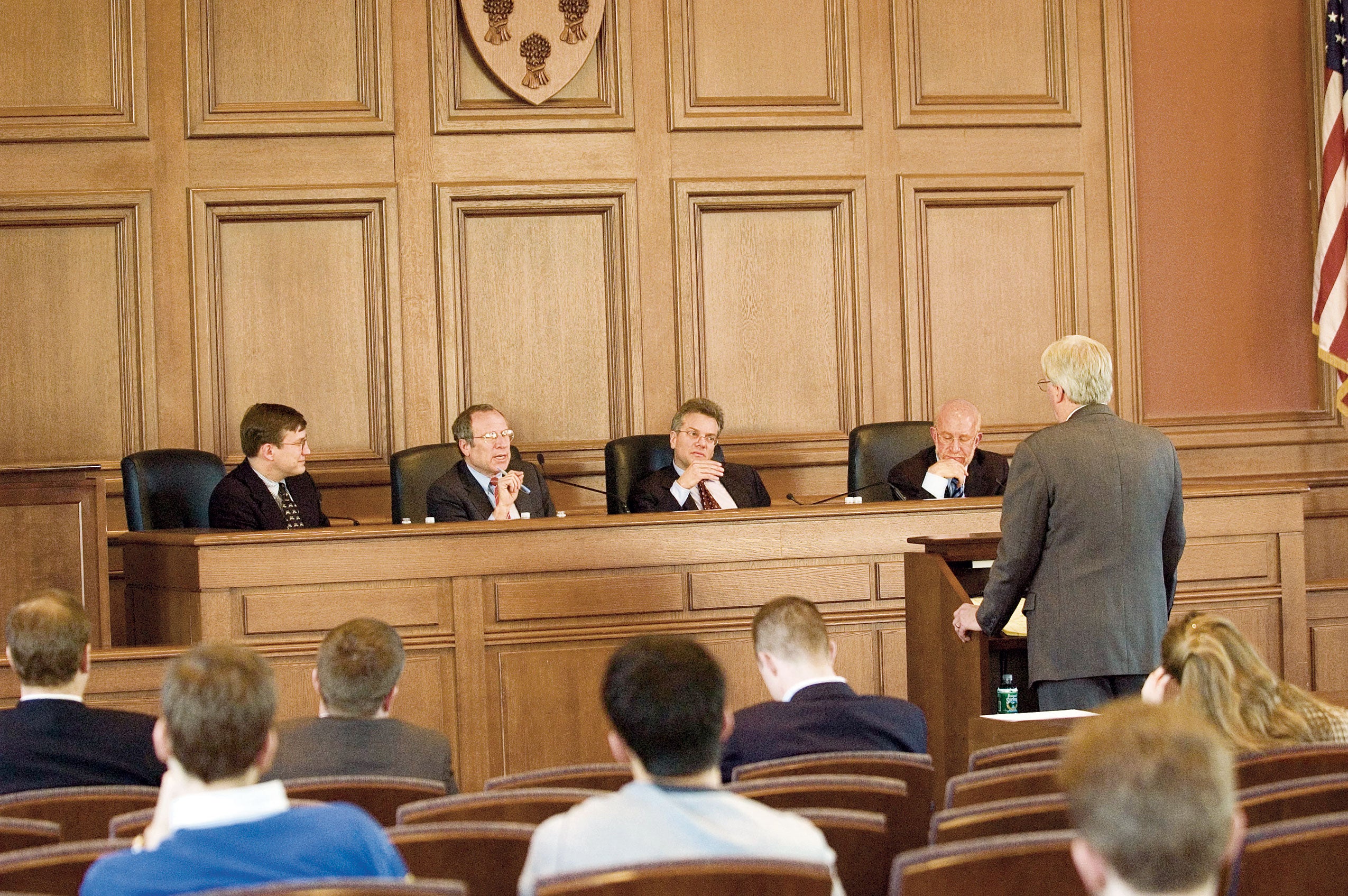For aspiring Supreme Court advocates, some hands-on experience
Harvard Law students hoping to learn how to argue before the Supreme Court need go no farther than the Ames Courtroom or a winter-term classroom.
Several students have organized a series of moot courts in which litigators preparing to go in front of the Court can come to Cambridge for a dry run before a panel of professors and an audience of students. And two lawyers from the nation’s most prominent boutique Supreme Court litigation firm, Goldstein & Howe, now teach a class at HLS in which students can write briefs and submit them to the Court.
Dean Elena Kagan ’86 helped woo the pair, Tom Goldstein and Amy Howe, to campus to teach over the winter term. She also found the money for the student moot court project. But the impetus for the moot courts came from students themselves, including self-described “Supreme Court nerd” Warren Postman ’07, who admits he enjoys listening to the high court’s oral arguments online.
“We spend a lot of time reading appellate opinions, but this is kind of the more dynamic side of it before the opinion has been made,” said Postman, a member of the campus chapter of the American Constitution Society.
In September, Postman and fellow ACS members organized the first in a series of moot courts this academic year, co-sponsored by the campus chapter of the Federalist Society. Their goal is to attract government and public interest litigants who can’t necessarily afford the expensive moot courts that private parties often pay for during the run-up to oral argument.
The offer intrigued Oregon Senior Assistant Attorney General Robert Atkinson, who was preparing to defend his state’s physician-assisted suicide law in Gonzales v. Oregon in early October.
Atkinson, who has done appellate work for 30 years, is hardly a novice in the courtroom. But as a rookie before the Supreme Court, he said his September appearance at Harvard Law “was particularly useful as a confidence builder.”
“Justices”–including Professor Richard Fallon–quizzed Atkinson, and a standing-room-only crowd of students got a chance afterward to ask questions of their own.
Atkinson said he wound up reworking his opening and took back questions to share with his team in the attorney general’s office in Oregon.
The experience proved equally instructive for students, says Postman. “You get to see them spar back and forth. It’s just fascinating to watch.”
Added the Federalist Society’s Jeff Harris ’06, “It’s a good way to emerge from the academic cocoon and see what practice actually looks like.”
In February, sessions were held on Randall v. Sorrell, a challenge to the constitutionality of Vermont’s campaign finance reform law, and on the pending challenge to redistricting in Texas. Eventually, Postman and Harris hope to give students additional ways to participate in the moot courts and help them better understand the nature of Supreme Court advocacy. They envision students playing the roles of clerks, writing bench memos for the professors who serve as justices. And, says Harris, this spring the Federalist Society will organize a panel discussion among several lawyers who specialize in Supreme Court litigation.
Students who want even more Supreme Court advocacy can enroll in the seminar offered by the husband-and-wife team of Goldstein and Howe, who teach a similar course at Stanford Law School. They offered it this winter at Harvard for the second year in a row. Goldstein has argued 16 cases before the Court.
Their method is to divide the class into teams and to assign each team an actual cert petition or brief. Last year, the Court agreed with the team that asked it to deny cert, rejecting two other student-filed cert petitions. Recently, students worked on a case on the rights of detainees at Guantanamo Bay, Cuba. Some also worked on Sorrell.
